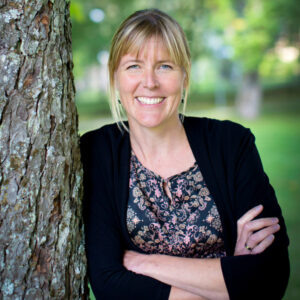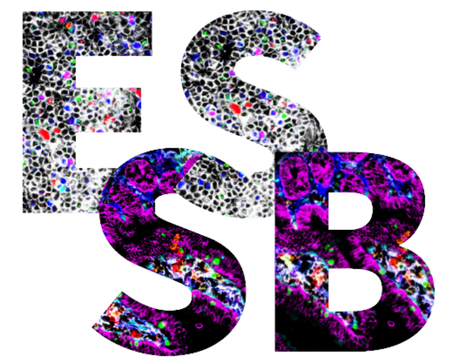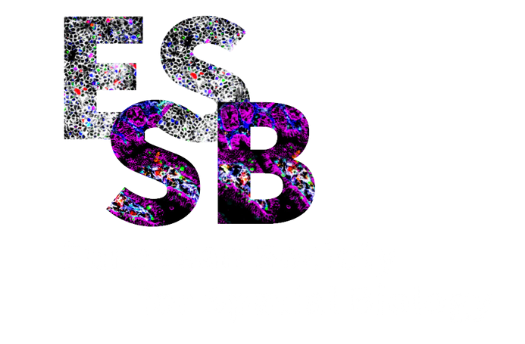Image Analysis for Spatial Biology
Chairs: Denis Schapiro, Carolina Wählby
Thursday, December 12th: 11:00 am

Invited talk by Carolina Wählby
Uppsala Universitet and SciLifeLab, Uppsala, Sweden
Spatial (transcript)omics – a joint mapping of tissue function and architecture
Optical microscopy combined with specific staining techniques has been crucial for much of the understanding we have today of both developmental processes, and disease, such as cancer. Via single cell transcriptomics, we have learnt that mRNA sequencing is an efficient way to identify different cell types and their function. By doing the sequencing directly in the tissue, via in situ sequencing, we can now map function to subcellular tissue architecture, and not only know which cells and functions are present, but also where, and in what context, they are present. This information can further be combined with detection of specific interactions between e.g., a drug and drug target. The techniques rely on computational methods, specifically addressing transcript detection, gene decoding, visualization, and finally quantification and interpretation. Visual assessment of microscopy image data becomes limiting as dataset size and complexity grows. It can also be difficult to draw confident conclusions if the observed processes are subtle and the samples are heterogenous. In the past ten years, AI, and particularly learning-based approaches relying on deep convolutional neural networks, have gained enormous popularity in all fields of image-based science. The methods have great potential, but they must also be used with care, not to fool us in our findings. We apply AI to map tissue morphology in relation to spatially resolved gene expression in tissue, with applications in cancer and development.
Biosketch
Carolina Wählby is professor in Quantitative Microscopy at the Dept. of Information Technology, Uppsala University, Sweden, and Scientific Director of the SciLifeLab Bioimage Informatics Unit. Her research is focused on developing computational approaches for extracting information from image data with applications in life science; primarily at the microscopy scale. Methods include traditional image analysis and computer vision technology as well as AI and deep learning. The goal of the analysis ranges from predicting and understanding dynamics of cancer cells to fast antibiotics susceptibility testing and ‘functional pathology’ combining tissue morphology with spatial transcriptomics. The research is primarily funded by the ERC and the Swedish Foundation for Strategic research. She received the SBI2 President’s innovation award in 2014 for her pioneering work on in situ sequencing, the Thuréus prize in 2015 for development of open tools for image analysis, and is a member of the Royal Swedish Academy of Engineering Sciences. She has a MSc in molecular biotechnology and a PhD in digital image analysis, and carried out postdoc research within genetics and pathology. She worked at the Imaging Platform of the Broad Institute of Harvard and MIT in 2009-2015 and became full professor at Uppsala University in 2014. She is a member of the steering group of a 300M€ effort on Data Driven Life Science, funded by the Knut and Alice Wallenberg Foundation, with the ambitious goal of training the next generation of life scientists.
Short talk by Jan Schröder
Department of Hematology, Oncology, Clinical Immunology and Rheumatology, University Hospital and Comprehensive Cancer Center Tübingen, Tübingen, Germany.
Department of Pathology and Neuropathology, University Hospital and Comprehensive Cancer Center Tübingen, Tübingen, Germany.
Deep Spatial Phenotyping of the Bone Marrow Microenvironment in NPM1-Mutant Acute Myeloid Leukemia
Despite generally favorable outcomes in NPM1-mutant acute myeloid leukemia (AML), 30% of patients have refractory/relapsing (R/R) disease and exhibit dismal outcomes. Long-term survival rates remain below 20% and R/R patients may only be cured with allogeneic hematopoietic cell transplantation. It is therefore critical to identify 1) biomarkers to predict therapy response and 2) novel disease mechanisms and therapeutic targets to improve the outcome of R/R patients with NPM1-mutant AML. The bone marrow microenvironment (BMME) has been implicated in leukemogenesis and drug resistance and therefore may account for prognostic disparities within genetically defined AML subsets and offer novel targeting opportunities.
We established a 60-plex co-detection by indexing (CODEX) antibody panel and spatially phenotyped the BMME in BM trephine biopsies from 68 NPM1-mutant AML patients at first diagnosis and 58 matched controls with normal BM (NBM). We imaged a total of 3.901.827 cells and used unsupervised clustering and manual annotation to identify 30 cell types, including leukemic cell subpopulations, myeloid, lymphoid, erythroid, vascular and stromal cells, megakaryocytes, and hematopoietic stem/progenitor cells. Spatial analysis of NBM marrows revealed 12 cellular neighborhoods (CNs) corresponding to known hematopoietic niches. The leukemic BMME showed a severe loss of structural organization with fragmentation of NBM CNs and expansion of leukemia-specific CNs. Furthermore, there was a shift towards immunosuppressive and regulatory lymphoid and myeloid cell types such as PD-1+ CD8+ T cells, regulatory T cells and myeloid-derived suppressor cells. Enrichment of suppressor cells and leukemia-specific CNs was associated with treatment response and clinical outcomes independently of clinical risk stratification. In conclusion, we captured the spatial landscape of the BMME in NPM1-mutant AML and for the first time identified leukemia-specific and prognostically relevant CNs in a real-world cohort of AML patients.
Short talk by Malte Kuehl
Institute of Medical Systems Biology, Center for Biomedical AI (bAIome), Center for Molecular Neurobiology Hamburg (ZMNH), University Medical Center Hamburg-Eppendorf, Hamburg, Germany
Department of Clinical Medicine, Aarhus University, Aarhus, Denmark
Department of Pathology, Aarhus University Hospital, Aarhus, Denmark
PathoPlex – Next-generation multiplexed image analysis
Protein expression and localization are critical to understanding health and disease. While transcriptomic methods have advanced, they miss important post-translational modifications and structural details critical to disease. However, current spatial proteomics methods are limited by cellular resolution (>200nm/pixel), number of targets (approx. 40-50), and focus on cell segmentation, often overlooking sub- and extracellular signals.
Here, we present Pathology-oriented multiPlexing (PathoPlex), a scalable, quality-controlled and interpretable framework that combines deep multiplexed imaging capable of mapping >120 proteins at 80 nm per pixel using commercial antibodies and light microscopy with a novel software package (spatiomic) that integrates pixel-level signals to identify altered protein co-expression.
To validate our approach, we first applied PathoPlex to a model of immune-mediated kidney disease and identified c-Jun as a key mediator. Next, we used PathoPlex to dissect diabetic nephropathy, revealing integrative pathological features such as Ca2+-mediated stress and enabling druggability profiling. In a final example, PathoPlex uncovered features of renal stress in patients with type 2 diabetes who lacked pathological evidence of kidney disease, which were then used to assess the impact of sodium-glucose cotransporter 2 inhibitors.
In summary, PathoPlex identifies integrative features of tissue biology and supports the development of next-generation pathology atlases.




